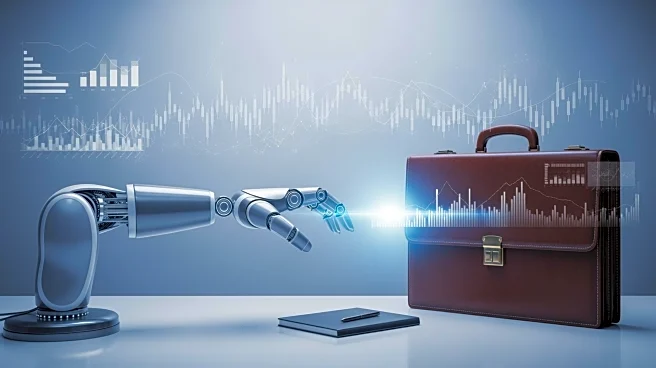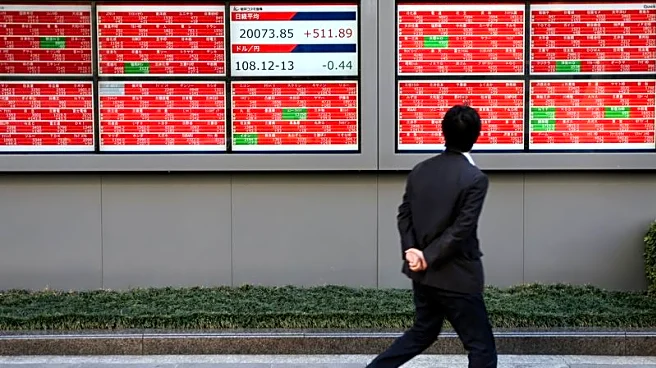What's Happening?
Tony Yoseloff, Chief Investment Officer at Davidson Kempner Capital Management, highlighted a significant issue in the tech industry during a Goldman Sachs podcast. He described the current massive investments
in artificial intelligence (AI) by major tech companies as a 'prisoner's dilemma.' Yoseloff explained that companies feel compelled to invest heavily in AI to maintain competitive positions, as their peers are doing the same. This dynamic is not limited to Silicon Valley but affects the broader U.S. equity market, where a few mega-cap tech stocks dominate. Yoseloff noted that while AI holds transformative potential, the economic benefits may take years to materialize, similar to past technological advancements like personal computers and the internet. He raised concerns about the market's patience and the potential for an 'AI wobble,' where investors might question the returns on these substantial capital expenditures.
Why It's Important?
The extensive AI investments by major tech companies have significant implications for the U.S. economy and stock market. As these companies drive market trends, their actions influence investor behavior and market stability. The potential for an 'AI wobble' could lead to market volatility if investors become skeptical about the returns on AI investments. This situation mirrors past tech bubbles, where initial enthusiasm led to overvaluation and eventual market corrections. The outcome of these investments will impact not only tech companies but also investors and the broader economy, as AI continues to reshape industries and business models.
What's Next?
The tech industry and investors will closely monitor the returns on AI investments. Companies may face pressure to demonstrate tangible benefits from their AI spending to maintain investor confidence. The market's response to these developments could influence future investment strategies and the pace of AI adoption across industries. Stakeholders, including tech leaders and investors, will need to navigate the balance between innovation and financial prudence to avoid potential market disruptions.












